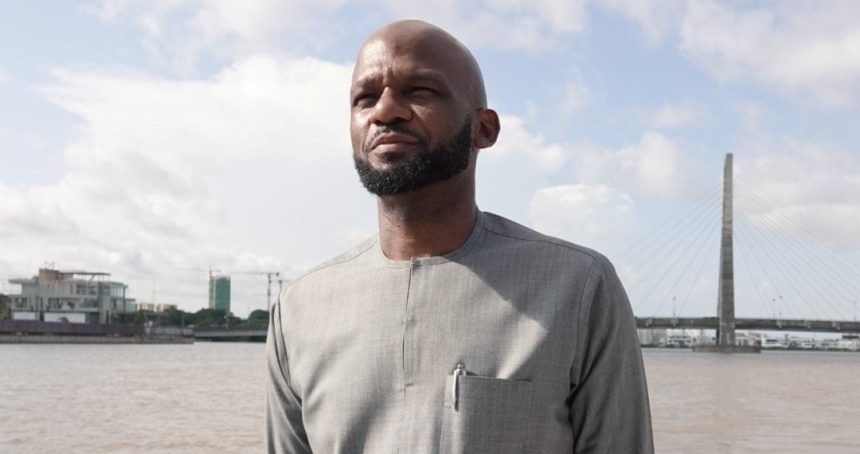Chief Executive Officer of Nigerian Telecommunications Limited, Soji Maurice-Diya, has unveiled an ambitious roadmap for the resurgence of Nigeria’s telecommunications sector, signalling the national carrier’s planned return to the market in early 2026.
Speaking at the Technology Times Thought Leadership Series recently in Lagos, Maurice-Diya outlined a comprehensive vision aimed at leveraging innovation, youth inclusion, and strategic industry collaboration to reposition ntel as a competitive force in Nigeria’s telecoms landscape.
“Most of us are aware that the telecoms industry in Nigeria, as we know it today, started almost 25 years ago,” Maurice-Diya said.
“It has witnessed significant growth and has become a critical pillar of our economy. Intel’s comeback seeks to build on this legacy through renewed innovation and localisation of technology and infrastructure,” he added.
Maurice-Diya reflected on the sector’s evolution, noting that major operators, MTN, Airtel, and Glo, have provided stability and demonstrated long-term commitment, allowing the industry to mature from its early, turbulent years.
“The early market was volatile, with many players coming and going. Today, there is more stability, and that stability allows us to innovate responsibly while serving new segments of the market,” he said.
Highlighting the role of government policy, Mr. Maurice-Diya commended reforms introduced by the Minister of Communications, Innovation and Digital Economy, Dr. Bosun Tijani, aimed at increasing industry capacity and creating a more favourable investment climate.
“There needs to be greater synergy between the communications ecosystem and the financial sector,” he explained. “Telcos must evolve beyond connectivity to become platforms that enable additional digital opportunities.”
Maurice-Diya noted that Nigeria’s next wave of telecoms transformation will depend heavily on cross-sector partnerships, spanning fintech, health-tech, and ed-tech.
Addressing persistent connectivity gaps, Maurice-Diya highlighted the Critical National Infrastructure Act, which now protects telecoms assets against vandalism and sabotage.
Complementary measures, such as dynamic pricing, tax incentives, and green-energy adoption, will deepen sector resilience.
He cited the Federal Government’s investments in 7,000 new rural telecom towers and the 90,000-kilometre national fibre-optic project as crucial steps toward bridging Nigeria’s connectivity divide.
“We at ntel will play a role not only by supporting the ecosystem but also by creating products that broaden and deepen connectivity,” he said.
Maurice-Diya emphasised the importance of balancing regulation with innovation.
“A lot of times, regulation comes on the back of innovation,” he said. “You’ve got to innovate first and test boundaries, especially where there’s ambiguity. Over-regulation stifles progress.”
He advised government agencies to monitor emerging technologies closely, intervening only, when necessary, rather than imposing pre-emptive restrictions that deter progress.
On global telecom trends, including spectrum liberalisation, infrastructure sharing, and 5G deployment, Maurice-Diya highlighted Nigeria’s large population and market size as strategic advantages.
“Needless to say, Nigeria has one of the world’s six or seven largest populations. One in five Black people is Nigerian,” he said.
He added that infrastructure and cost-sharing initiatives would reduce service costs and free capital for emerging technologies such as artificial intelligence and machine learning, while extending innovation into sectors such as healthcare, education, and logistics.
“All of those innovations lay the foundation where additional returns can be deployed into emerging technologies,” he said.
Maurice-Diya stressed that Nigeria’s long-term telecom sustainability depends on localisation of technology, infrastructure, and human capacity.
“The sustainability of the industry is predicated on the ability to localise as much as possible,” he said.
He praised initiatives such as the 3 Million Technical Talent programme, which aims to develop a skilled digital workforce, and called for intelligent government support to encourage innovation without protectionist policies.
Reflecting on ntel’s revival, Maurice-Diya described the company’s strategy as a “light digital play” targeting niche segments of Nigeria’s youth market.
“We don’t intend to compete for 100 million subscribers; we want to serve a subset extremely well,” he said. “This focused model reflects our confidence in Nigeria’s fast-growing youth market.”
“Nigeria’s demographic reality, millions of young citizens entering adulthood each year, forms a key pillar of ntel’s growth plan,” Maurice-Diya added.







